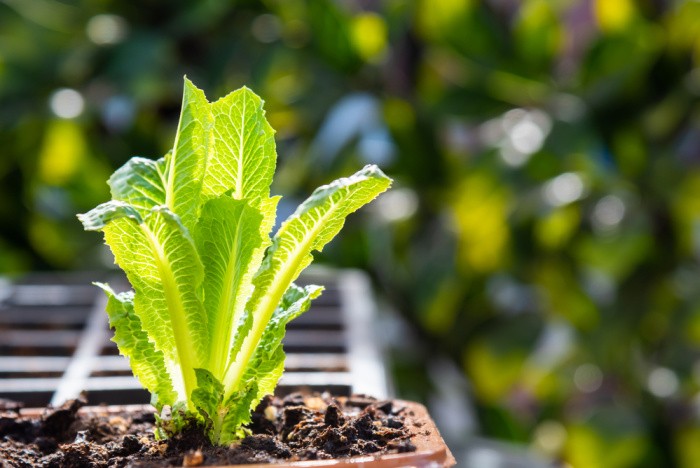
I will share my thoughts on seven crops to grow for food storage today. I’ve had a garden my entire life. There is nothing better than the first red tomato you pick. They taste better than store-bought tomatoes because they are non-GMO tomatoes fresh out of the garden. These all can be used for food storage, and if you dehydrate them or make powder, you’ll have great choices for long-term storage.
My tomatoes are juicy and sweet. Do you need me to say more? Now, with groceries going up every month, I encourage you to start a garden if you’ve never had one or to expand your current garden, if possible. If you’re unable to garden the way you’d like because of space, I get it. Hopefully, you have space on a deck, patio, or side yard to put plants in pots.
Make a plan to find a Farmer’s Market in your neighborhood in late summer and no later than early fall to help supplement what you grow yourself. If you have access to a community garden, go for it. If you can only grow herbs, that’s awesome as well. This post may excite you about growing more of your food, which is my goal as I update this post. This is where I buy my seeds: SeedsNow
The tomato cages you see in the picture are some I purchased from Ace Hardware. They last for years. I’ve had some for 15 years or more; they’re fantastic. I don’t see them on their website today. When available, they cost about $25.00 each. Yes, they’re expensive, but they’ll last my lifetime. I hope you find some in your area since they’re sturdy.
Garden Items You Need:
- Good Seeds: SeedsNow
- Good Gloves
- Good Soil: please check with your neighborhood garden shop or nursery for the soil type for your location so you can choose the proper soil amendments for your area.
- Worm Castings
- A Good Watering System
- Good Organic Fertilzer
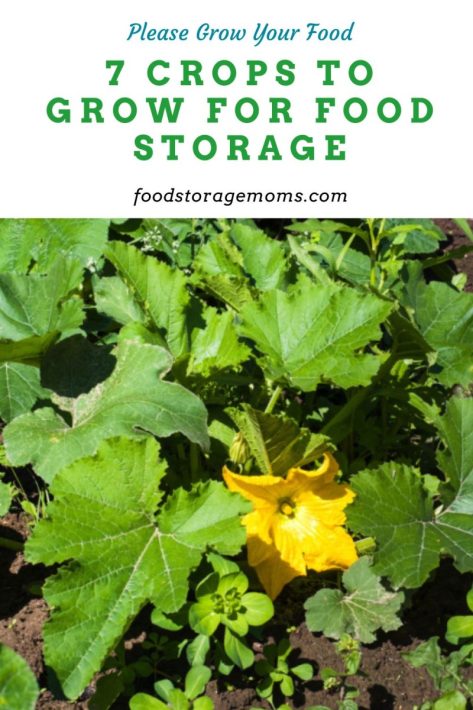
7 Crops To Grow For Food Storage
1. Garlic:
Garlic is an excellent addition to any garden when you want flavorful ingredients for many recipes.
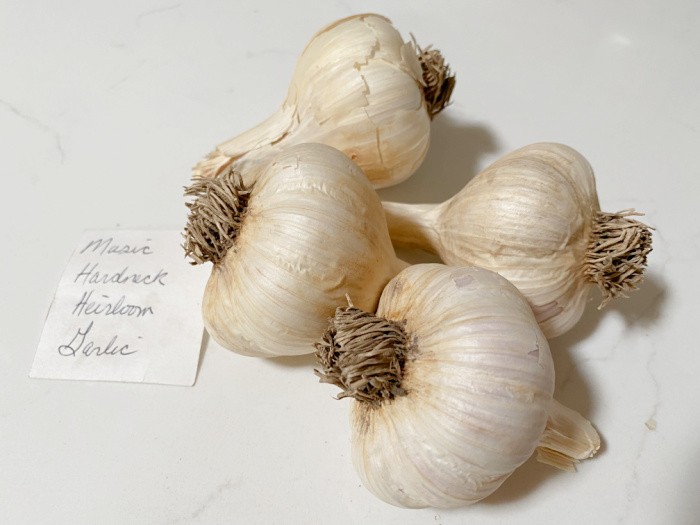
Garlic is a very forgiving vegetable. You need good soil and drainage. My favorite place to order seed garlic is non-GMO organic Seeds. Be prepared for sticker shock when you see the prices of seed garlic. Remember, after the first investment, you can save some of the larger bulbs for seed next year. If you plan correctly, you’ll always have seeds to plant year after year. Just buy right the first time.
Plant before the first frost, and never wait for the hard freeze to arrive. It lies dormant over the winter and then pops up in the spring—plant cloves 2 inches down, 5 inches apart. Cover with 5 inches of straw. Leave the straw on it in the spring. If you have a drought or just a dry season, it will help keep moisture in the soil. Dig up carefully the last week of June. If a prediction of lots of rain is coming near harvest time, dig it up right before it starts. Sitting in water destroys the outer skins on the bulb and makes it hard to dig them up. Thank you, Jackie, for these tips and the freshly grown garlic.
Have we been taking for granted our food sources or the safety of how our food is grown? Are you as frustrated as I am? So, let’s plant the seeds or the plants that work in our community. It’s called being self-reliant, and we can do this, I promise.
2. Green Beans:
Green Beans are a healthy vegetable that provides many nutrients, including protein.

Green beans like composted rich soil with rotted manure. You plant the seeds 1-2 -inches deep and cover them with soil. Space the seeds in rows about 6-8 inches apart. I usually plant bush beans rather than pole beans since they’re easier for me to harvest, and they grow a high volume of beans. Some people will build a small trellis for their pole beans, and I haven’t done that.
Water them immediately and regularly until they begin to sprout. After sprouting, they need 1 to 1.5 inches of water each week. They need full sun, so plan accordingly where you’ll plant them. They grow best when the air temperatures are between 65 to 85 degrees.
When the green beans are the size of a pencil, they are ready to harvest. They can toughen up very quickly, so check on them often to ensure the texture you want. You pick them by snapping them off the vine.
Please remember, if you can stagger the plantings every 2 weeks, you can harvest green beans for weeks rather than all at once.
pH level for Green Beans: 6.0 to 6.2
3. Lettuce:
Lettuce has lots of fiber from roughage, which is a goal; you can’t go wrong with lettuce.
Butterhead Lettuce
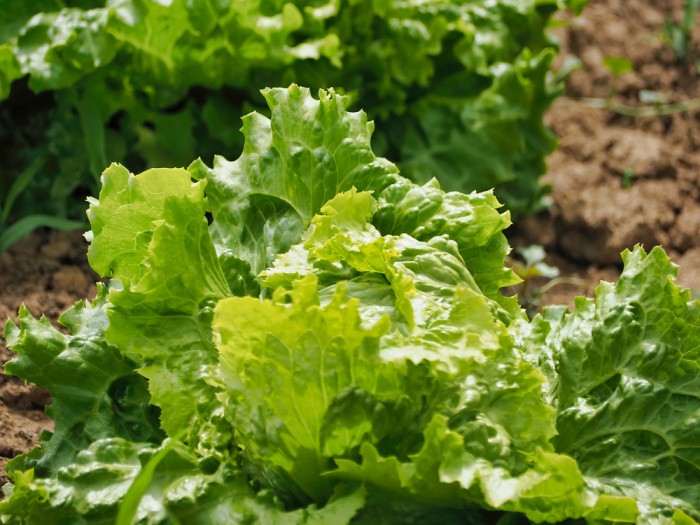
Lettuce is one of the easiest vegetables to grow. Once you start developing your salad base, you’ll be hooked. The nice thing about lettuce is that it can be grown in pots, raised garden beds, and even 5-gallon buckets with holes drilled in the bottom to drain excess water or rain. I’ve started growing my lettuce indoors, too. I love seeing the plants up close and enjoy cutting off enough for dinner as they grow and mature.
An excellent product I can recommend to my readers is Aerogarden hydroponic growing units. You set them up indoors and watch the magic of growing things without soil. AeroGarden, Please note that they are coming back in 2025!!
This variety is popular because it grows compact butterhead-type lettuce. It is also remarkable because it grows higher off the ground, so the leaves don’t rot on the bottom.
Days to Maturity (ready to harvest): 55 days
Germination: 7-14 days
These seeds can be planted in the ground, in pots, and raised garden beds. Sow them thinly in the soil in rows 1 foot apart and plants 18 inches apart. They prefer a temperature of 40-80 degrees; this variety prefers a pH level of 6.5 to 7.5.
They don’t like acidic soil. They like well-rotted manure and well-fertilized soil with high nitrogen fertilizer (10-8-4). Plant in early spring or late fall for the best harvest.
Romaine Lettuce

Romaine is typically my favorite lettuce because I love the flavor. It has large, full-bodied heads with mild and sweet leaves. These plants grow about 10 inches tall. Romaine is the most nutritious of all lettuce varieties.
Days to Maturity (ready to harvest): 80 days
Germination: 7-14 days
These seeds can be planted anywhere: in the ground, in pots, and raised garden beds. Sow them thinly in the soil in rows 1 foot apart and plants 18 inches apart. They prefer a temperature of 40-80 degrees; this variety prefers a pH level of 6.5 to 7.5.
They also don’t like acidic soil. Like other varieties, they like well-rotted manure and well-fertilized soil with high nitrogen fertilizer (10-8-4). Plant in early spring or late fall for the best harvest.
4. Onions:
Onions (and garlic) are great for meal prep when you want some savory flavor.
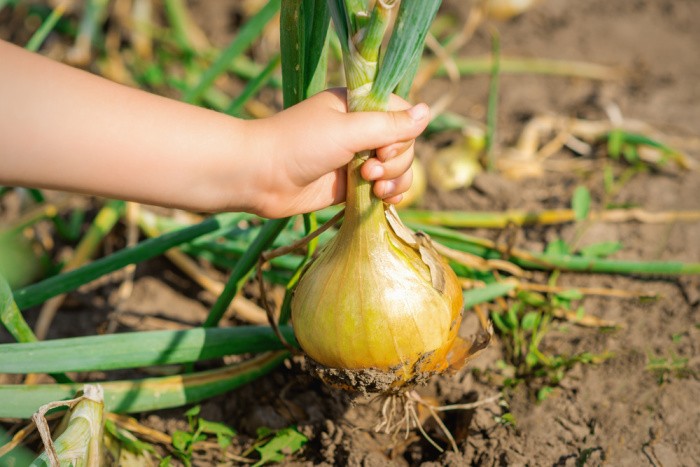
I want to wait until around March or April to plant onions because this works best for your desired results. The ground is warm, and it’s not getting super cold anymore. Your onions can’t grow without sun, so make sure you plant them in a location with full sun! Understanding where to plant may take some time, but you’ll figure it out soon.
Another hint for watching onions grow is not to shade them with other plants. In other words, onions need space and shouldn’t be crowded with other plants. Bunching onions is NOT a good idea.
Onions Are a Leaf Crop
When people think of spring onions, they believe they are more of a root crop. However, they’re more of a leaf crop. Onions should not be buried more than 1 inch under the soil.
After you’ve planted them an inch deep, there are some things you can do to help them grow. Onions can be planted from seeds, plants, or sets. The early spring is the best time to grow onions.
If you want big bulbs, the onions need to be fertilized. However, you don’t want to continue fertilizing once the bulbs become more prominent.
You may not think that onions must be watered often, but they do. Onions from seeds need plenty of water. Whether growing red or white onions, water is essential to developing any plant. You can use your lawn clippings, composted leaves, and even sawdust to create good soil additions to keep the soil moist. If your soil is mostly sand, holding the water well may not be easy.
Onions need about one inch of water a week to grow happy and healthy. A little trick to watering onions is that the more you water them, the sweeter they will be.
5. Spinach:
Spinach is an excellent vegetable to use in many recipes. I love salads with baby spinach!
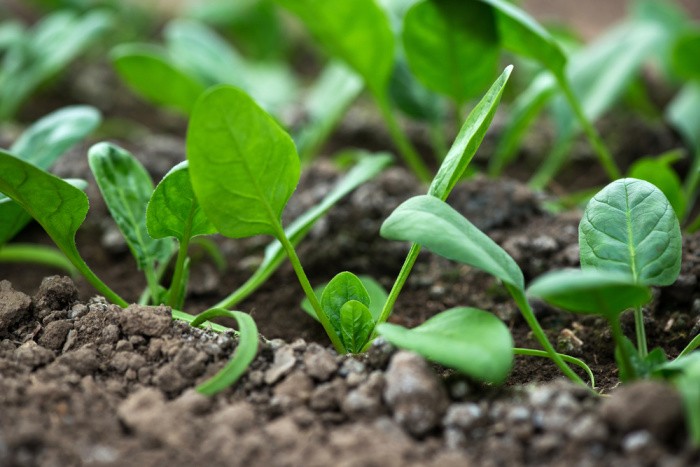
I always use seeds, and I don’t bother with seedlings. The seeds work well. You can plant the seeds about 4-6 weeks after the last frost in the spring.
If you plant some seeds every two weeks, you will have spinach for weeks, if not months. I have had spinach sprouts in the winter if we have a mild season.
- You’ll need to thin the spinach seedlings if you spread too many seeds when planting.
- They need about 12 inches between each row. There is nothing more exciting than when you watch for that first sprout. I love it!
- The plants like temperatures between 35-75 degrees.
- Once the heat hits here in my area, my planting days are over until late August or early September.
- Then, I start a new batch every two weeks. This vegetable does well in full sun or partial shade—the seeds I buy mature in 40 days.
- Pots work well if you use the Miracle Grow Potting mix. They are great for apartments or tiny yards.
6. Tomatoes:
Tomatoes are a versatile plant. They’re great in salads, sandwiches, pizza, salsa, and more!
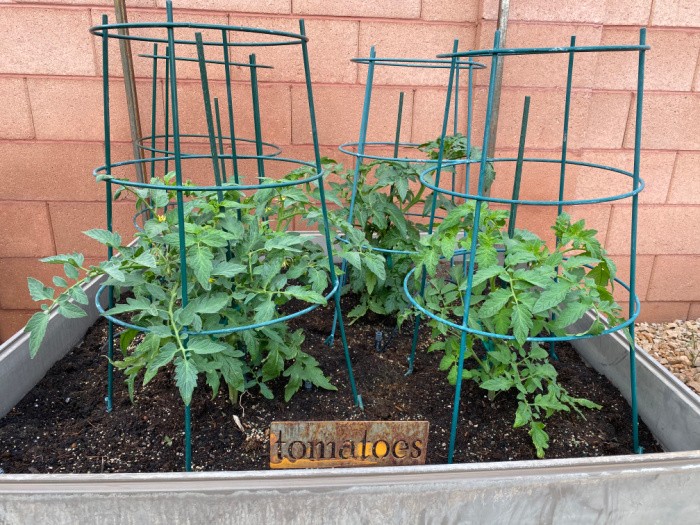
Let’s talk about tomato choices, how you plan to use the ones you want to grow, and in what quantities. You must decide if you will eat BLTs during the summer (my favorite sandwich); that’s awesome! If you want to make salsa, tomato juice, or spaghetti sauce, consider which tomatoes are best for those uses since they require more significant quantities. Of course, those chosen have to be suitable for your area. I only know Utah, so I’ll share what I have done for years. These are 100% Heirloom/Non-Hybrid/Non-GMO tomatoes. I buy all my seeds from SeedsNow
Tomato Varieties:
The varieties listed here show the name, the typical size, the growing period, and some great options for how to put them best to use:
- Abraham Lincoln: 1 lb. heirloom, great for ketchup and tomato juice. Easy to grow and matures in 85 days.
- Beefsteak: large tomatoes, over 2 lbs. easy to grow, incredible for slicers, and matures in 85 days.
- Bonnie’s Best: 6-8 ounce fruit, great for slicers or canning. Matures in 85 days.
- Marion: chefs prefer these crack-resistant tomatoes. Great for salads or sandwiches. Matures in 75 days.
- Pear: pear-shaped fruits that grow in clusters. Great for salads. Matures in 75 days.
- Homestead: a popular heirloom variety. They are good ones for canning, and they are great in a hot climate. They mature in 80 days.
- Mortgage Lifter: they produce large tomatoes, up to 2 lbs. Easy to grow and matures in 70 days.
- Money Maker: It’s one of the most reliable tomatoes you can grow. They grow up to 8 ounces in size, are easy to grow, and mature in 85 days.
The seedlings need temperatures of 70 degrees F during the day and 40 degrees F at night. Once they reach 4 inches tall, transplant them into larger containers or directly into the garden soil. Please plant them deeper than other vegetables. I’ve tried to follow the adage that tomatoes do best when they have at least 18 inches for root growth.
Sweet Tomatoes need at least 8 hours of sunlight each day. Be sure to plant your seeds or seedlings in a location with at least this much sunlight. They also need at least 3 to 4 months of warm, dry weather. Continue feeding your tomatoes throughout the season with organic compost. The temperatures at night should be 55 to 75 degrees F.
7. Zucchini:
Zucchini is such an easy plant to grow. Because it is so prolific, you’ll probably end up giving some away.
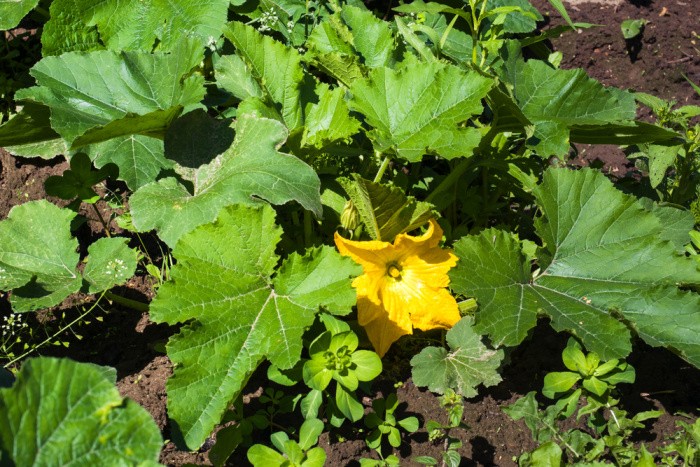
Summer Squash: zucchini, crookneck, and straight-neck (harvested in the summer before they reach maturity).
Winter Squash: pumpkins, butternut, spaghetti, and acorn squash (harvested in the autumn months after they reach maturity).
When you plant the seeds, test the soil to ensure it’s at least 60 degrees F. before you sow them. They need full sun exposure. They need loamy soil rich in nutrients. The soil must drain adequately. Plant the seeds in hills (2-3 each) one inch deep. Space them 2-3 feet apart. Thin as needed to produce the most potent plant. Use a cloche to keep the plants warm in case of cool weather. Mulch the plants to keep them moist and weed-free. When the first blooms appear, fertilize the plants.
Water deeply with at least one inch of water per week. The soil needs to be moist four inches down. If your blossom ends turn black and rot, then you have blossom rot. It’s usually caused by uneven moisture in the soil, but it could also be a calcium problem. Water must be consistent and frequent for the fruit to produce. If the fruits are misshapen, they may not have received enough water or fertilizer. Check for fruit you can pick daily; they grow faster than you may think.
pH level for Squash: 5.5-6.8
Are there other plants you should grow for your food storage?
You may want to try other plants for your garden that other readers have found work well as follows:
- Carrots
- Beets
- Green Peppers
- Herbs like parsley, mint, and cilantro
- Potatoes, including sweet potatoes
- Parsnips
- Berries, including strawberries, raspberries, blueberries, and blackberries
- Other vegetables like turnips, corn, broccoli, brussels sprouts, swiss chard, cabbage, and cauliflower
Gardening Posts:
- Tips For Growing Sweet Tomatoes
- How To Plant Garlic Step-By-Step
- Lettuce: What Kind Should I Plant
- Easy Vegetables Anyone Can Grow
- How To Grow Squash
- Growing Spinach: Everything You Need To Know
Final Word
I hope you enjoyed my 7 crops to grow for food storage today. In today’s culture, not many of us are geared to raising our food, particularly for storage. If you’ve been to the store lately, you’ve seen how much food prices have increased over the past few weeks. What better reason to raise your food if not to save money?
With all the challenges we see in the global economy, having some food stored for emergencies makes even more sense. Don’t wait until later; the time is now. The more food we produce, the better off our family will be. Please keep stocking up; we must. May God Bless this world, Linda
Copyright Images: Romaine Lettuce Depositphotos_365203520_S by Amy K Mitchell, Growing Lettuce Depositphotos_532862850_S by Wirestock, Green Beans Depositphotos_389773304_S by teine26, Onions Depositphotos_379006500_S by Okskukuruza, Spinach Depositphotos_440851968_S by Dimitrova, Zucchini Depositphotos_287892434_S by Elenglush,
The post 7 Crops To Grow For Food Storage appeared first on Food Storage Moms.
from Food Storage Moms
No comments:
Post a Comment